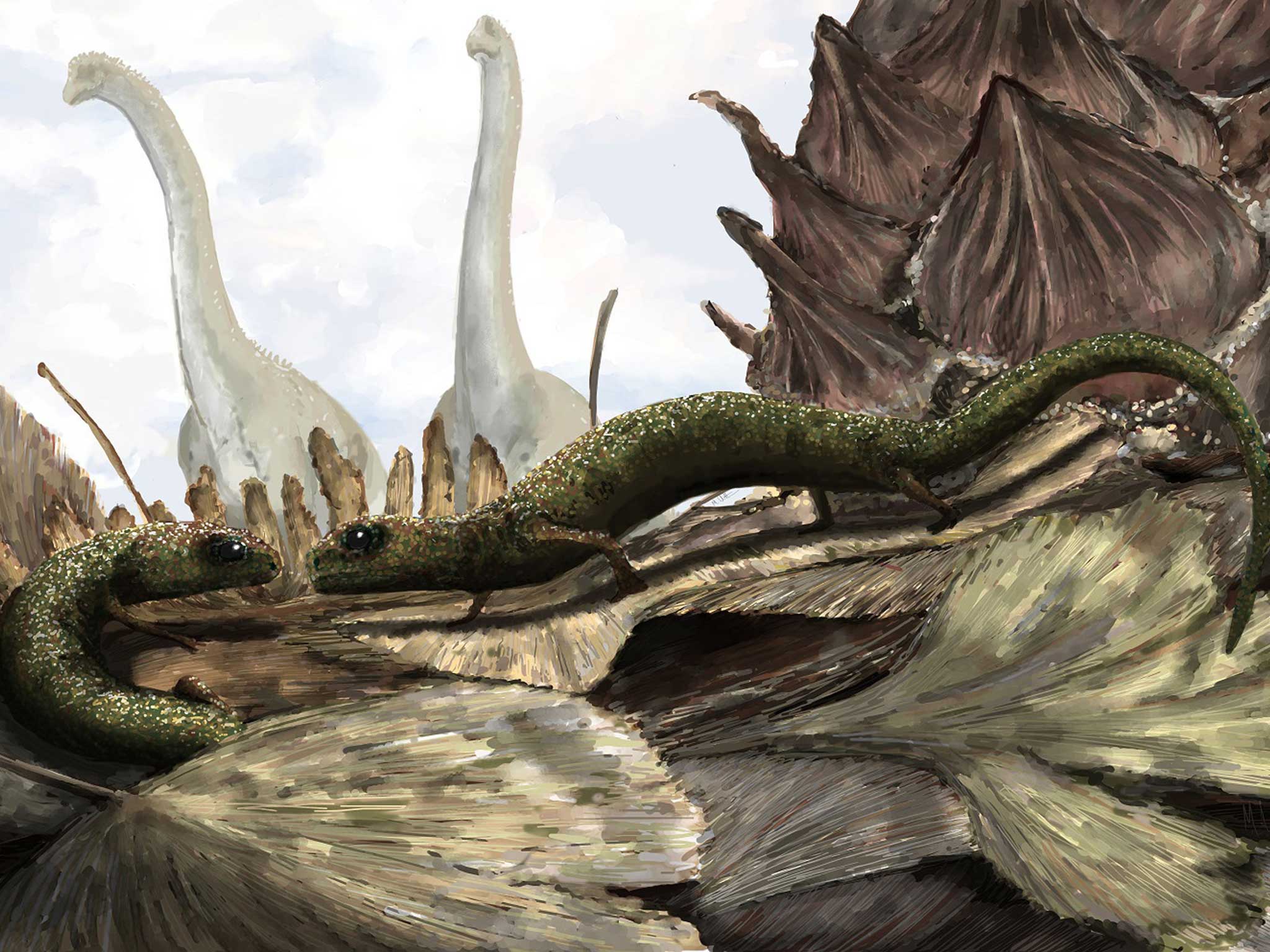Tiny but feisty prehistoric wesserpeton amphibian discovered

A tiny but feisty species of amphibian that lived in the shadows of dinosaurs has been discovered by scientists.
The discovery of the wesserpeton fills a gap in the evolutionary history of a now-extinct group, the albanerpetontids, according to researchers at the University of Portsmouth.
The amphibian, nicknamed "Wessie", was about the size of a small, modern-day newt and unlike most amphibians, albanerpetontids had a scaly skin and eyelids, showing that they spent most of their time on land. Details of the skeleton also suggest that they were well adapted to burrowing.
The creature lived on the Isle of Wight, which has gained the nickname Dinosaur Island because of the number of fossils found there, about 130 million years ago during the early cretaceous period, at the same time as dinosaurs such as neovenator, iguanodon and giant, long-necked sauropods.
The researchers believe that broken but healed jaws among the bones suggest Wessie was a feisty creature. Like some modern-day salamanders, it probably engaged in fierce battles for mates and territory and sharp chisel-like teeth indicate that it was a predator.
Steve Sweetman, of the university's School of Earth and Environmental Sciences, said: "When I started looking for the little animals that lived with the dinosaurs, a Wessie jaw was the first thing I found and I can still remember how excited I was. I also remember thinking that 'albanerpetontid' was a heck of a mouthful for such a tiny creature.
"Of the 50 or so new four-legged animals I have now found, Wessie bones are the most common and it was clearly well adapted to the ancient floodplain environment in which it lived."
The researchers have no complete skeletons of Wessie but they have a large number of isolated bones representing almost all parts of the animal.
Dr Sweetman and his co-author, Jim Gardner of the Royal Tyrrell Museum of Palaeontology, Canada, named the animal wesserpeton because its bones come from rocks known as the Wessex Formation.
The discovery of Wessie neatly fills an evolutionary gap. Albanerpetontids are first found in rocks of middle jurassic age and their last occurrence is in the late pliocene.
During this period of more than 165 million years, skull bones known as frontals gradually changed from bell-shaped to triangular. Until now, part of this transition was missing from the fossil record.
Dr Sweetman said: "Until the discovery of wesserpeton, there appeared to be an abrupt transition from the more primitive elongated and bell-shaped frontals of the early albanerpetontids to the triangle-shaped frontals of later forms. The frontals of wesserpeton are elongated but they are also triangular, neatly filling the gap between the two."
The discovery is published online in the journal Acta Palaeontologica Polonica.
PA
Join our commenting forum
Join thought-provoking conversations, follow other Independent readers and see their replies
Comments
Bookmark popover
Removed from bookmarks